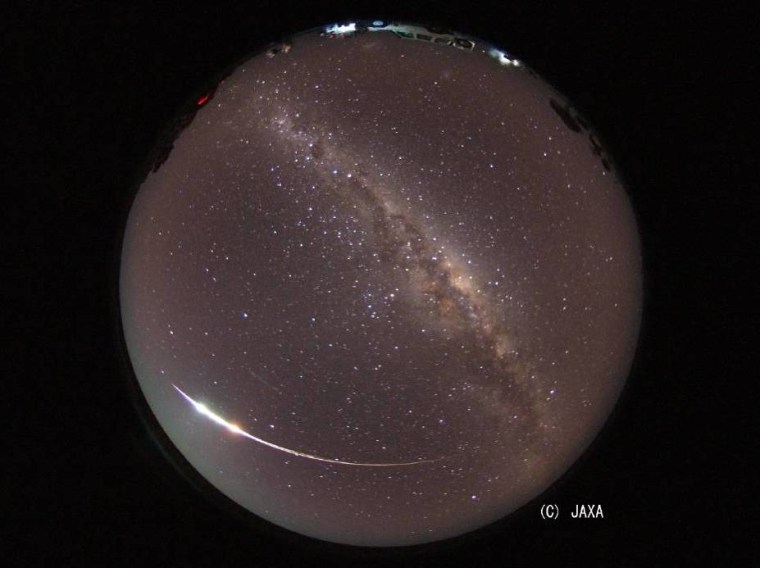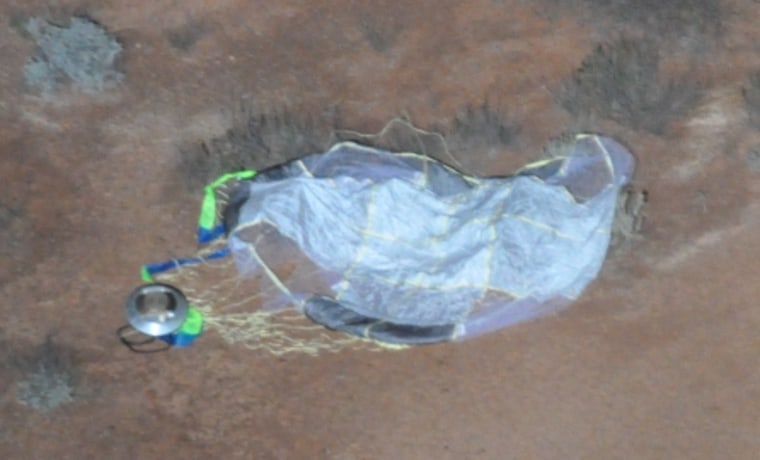A fiery burst of light over the Australian Outback late Sunday marked the return of a Japanese space probe, potentially carrying samples from an asteroid that could offer insights into the creation and makeup of the solar system.
It was the first time that a spacecraft successfully landed on an asteroid and returned to Earth.
After traveling 4 billion miles (6 billion kilometers) in seven years, the Hayabusa explorer incinerated on re-entry after jettisoning a capsule expected to contain the first asteroid dust ever collected.
"We just had a spectacular display out over the outback skies of South Australia," The Associated Press quoted Trevor Ireland, the only Australian scientist on the Hayabusa team, as saying. "We could see the little sample return capsule separate from the main ship and lead its way in, and (we) just had this magnificent display of the breakup of Hayabusa."
An Australian defense official told Reuters the display "was like a shooting star with a starburst behind it. It was fantastic."
The capsule parachuted to Earth within the Woomera Prohibited Area, a remote military zone 300 miles (485 kilometers) northwest of the South Australian state capital of Adelaide.
The Japan Aerospace Exploration Agency said it had confirmed the position of the fallen capsule, and recovery would take place on Monday. The capsule will be sealed in an airtight vessel and taken to Japan for study.
Hayabusa, the $200 million project launched by the Japanese space agency in 2003, landed on the asteroid Itokawa in 2005 and is believed to have collected samples of material from the surface that may shed light on the solar system's origin and evolution.
Because of problems experienced during the landing, it's not certain whether the probe was able to collect as much material as it was designed to do. Nevertheless, scientists hope at least that the Hayabusa sample capsule contains flecks of asteroid dust that were picked up during the encounter.

Researchers want to study how and when the asteroid was formed, its physical properties, what other bodies it may have been in contact with, and how solar wind and radiation have affected it.
Hayabusa was originally due to return to Earth in 2007 but a series of technical glitches — including a deterioration of its ion engines, broken control wheels, and the malfunctioning of electricity-storing batteries — forced it to miss its window to maneuver into the Earth's orbit until this year.
If Hayabusa is indeed carrying asteroid samples, it would be only the fourth type of space sample returned to Earth in history — a short list that also includes moon rocks and soil collected by the Apollo missions, cometary material from the Stardust mission, and solar-wind particles from the Genesis mission.
Preliminary analysis of the samples will be carried out by the team of Japanese, American and Australian scientists in Japan. After one year, scientists around the world can apply for access to the asteroid material for research.

This report includes information from The Associated Press, Reuters and msnbc.com.